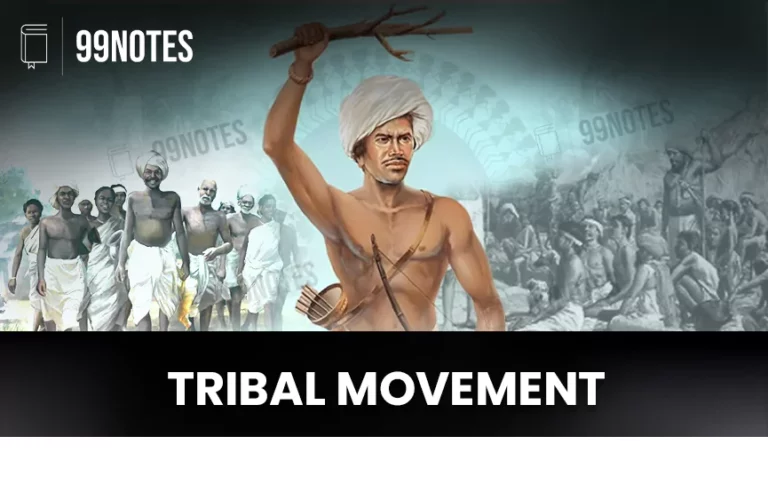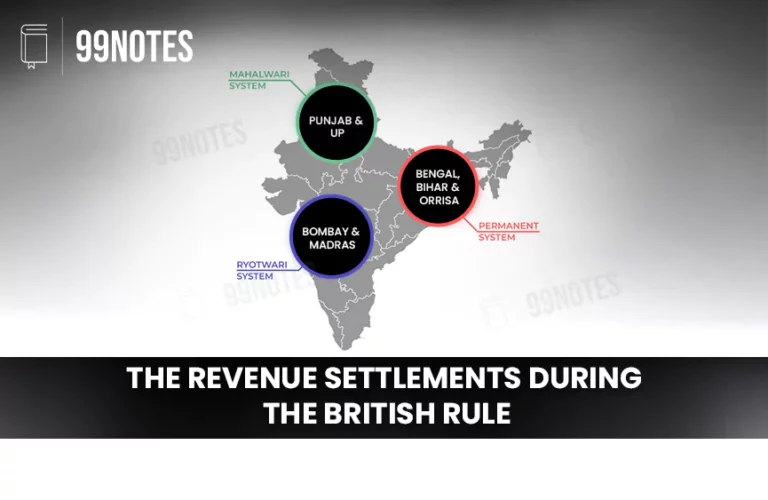Tripartite struggle (790-1162AD) History, Cause & Consequences [UPSC Notes]
After the decline of Harsha’s empire in the 7th century, several large states arose in North India, the Deccan, and South India. The Palas, the Pratiharas, and the Rashtrakutas were prominent among them.
The Tripartite Struggle for Kannauj, aka The Kannauj Triangle Wars, is the struggle for the control of northern India that took place in the 8th and 9th Centuries among the Pratihara, the Pala and the Rashtrakuta Empire.
Who Were the Parties Involved in the Tripartite Struggle?
- Who Were the Parties Involved in the Tripartite Struggle?
- The Tripartite struggle for Kannauj
- Phase I of the Kannauj Conflict:
- Phase II of the Kannauj Conflict:
- Causes of Tripartite Struggle
- The Aftermath of the conflict:
- Causes of Decline of the three empires
- Administration of Pala and Pratihara
- Administration of Directly administered territories:
- Administration of Feudal territories:
- Administration of Rashtrakuta
- Development of regional Languages
- Art and Architecture:
- Sources of History:
- FAQ’s Related to Tripartite Struggle
- Explore additional significant articles on Medieval Indian History listed in the table below:
- Related FAQs of Tripartite struggle
Three parties were involved in the Tripartite Struggle:
- Rashtrakuta Dynasty
- Pratihar Dynasty
- Pala Dynasty
The Palas originated from the Gauda region of Bengal in eastern India. At the same time, the Pratiharas rose from the Mandor (Avanti-Jalaor region) area in western India. The Deccan area of India came to be dominated by the Rastrakutas.
![Tripartite Struggle (790-1162Ad) History, Cause &Amp; Consequences [Upsc Notes] | Updated October 7, 2025 Tripartite Struggle- Age Of Three Empires](https://99notes.in/wp-content/uploads/2022/12/Age-of-three-empires.jpg)
The Rashtrakuta Dynasty
- In Sanskrit, the name ‘Rashtrakuta’ means ‘Country’ (Rashtra) and ‘Chieftain’ (Kuta). The word Rathika appears in Ashoka’s (Mansehra, Girnar and Dhavali) edicts, which may have been the Rashtrakutas’ ancestors.
- However, their ascension began in 753 CE, when Dantidurga, a feudatory of the Chalukyas of Badami, defeated their King Kirtivarman II.
- In 753CE, he took the title Rajadhiraja declaring himself king over local feudal kings according to the Ellora record of Dantidurga. Eventually, the Rashtrakutas controlled all of the Deccan and central India, becoming the strongest house in India.
The Gurjara Pratihar Dynasty
The Pratiharas of Mandavyapura (today’s Mandor near Jodhpur) first appeared in the 6th Century CE. By the 8th century, they emerged as the powerful Gurjara Pratihara Dynasty, which ruled between mid 8th To 11th centuries.
- Mythological theories:
- Chander Bardai has mentioned in Prithviraj Raso that Pratiharas have emerged from an agnikund during a sacrifice performed by the Sage Vashista on Abu mountain.
- The literary meaning of Pratihara is doorkeepers. It is believed that they are descendants of Lakshmana, who served as his brother Rama’s doorkeeper, hence the name Pratihara.
- Nagabhatta-I was the founder of the Gurjara Pratihar Dynasty. He is believed to have ruled between about 730 CE – 760 CE.
- However, Gurjaras existed before Nagabhatta-I, as mentioned in Banabhatta’s Harshacharit and Ravikirti’s Aihole inscription. In all such inscriptions, they are mentioned as Gurjaras, even though they called themselves Pratirharas.
- Mihir Bhoja, the hero of Gwalior Prashasti, is considered its greatest ruler.
The Pala Dynasty
- Soon after the death of Gauda King Shashanka, lawlessness (Matsyanyaya) erupted in the country’s northern and eastern parts, allowing the Palas to seize control and establish the Pala Empire.
- Gopala founded the Pala empire in 750CE after being elected as king by his feudal lords. He established Odantapuri University in Bihar Sharif.
- Its greatest ruler Dharampala founded the Vikramshila University in Bhagalpur and a Buddhist monastery in Gaya.
- They controlled Bengal and Bihar for nearly 400 years, from the eighth to the twelfth centuries. Rulers of this dynasty had ‘Pala’ in their name, which means ‘protector’.
|
Pala(750-1161AD) |
Gurjara-Pratihara(730-1036AD) |
Rashtrakuta(753-982AD) |
|
Founders |
||
|
Gopala(750-770AD)
|
Nagabhatta I(730–760AD)
|
Dantidurga(753-756AD)
|
The Tripartite struggle for Kannauj
Phase I of the Kannauj Conflict:
- The first phase of the tripartite struggle began around 790 AD with a clash between Pala king Dharmapala and Pratihara king Vatsaraja at Prayaga, which resulted in the defeat of Dharmapala.
- Later Vatsaraja was defeated by Rashtrakuta king Dhruva. However, Dhruva was unable to consolidate his victory because he needed to return to the south to attend to the conflict with the Chalukyas of Vengi.
![Tripartite Struggle (790-1162Ad) History, Cause &Amp; Consequences [Upsc Notes] | Updated October 7, 2025 Tripartite Struggle- Phase I Of The Kannauj](https://99notes.in/wp-content/uploads/2022/12/Phase-I-of-the-Kannauj.jpg)
|
Phase I of the Tripartite Struggle |
||
|
Pala |
Gurjara-Pratihara |
Rashtrakuta |
|
Dharampala (770-810CE)
|
Vatsaraja (778-800CE)
|
Dhruvadhar Varsha (780-793CE)
|
Phase II of the Kannauj Conflict:
- Phase I of the conflict ensured that the Pratiharas were weakened in the north. This provided the Palas with a good opportunity to attack again.
- Dharmapala took advantage of the situation and recovered Kannauj, putting Chakrayudha on the throne. He established himself as the lord of virtually all of Northern India via a series of successful expeditions.
- A repeat of History: Vatsaraja’s successor, Pratihara ruler Nagabhatta II invaded Kannauj and established his control. This started another round of conflict. Finally, Nagabhatta II defeated Dharmapala in the battle of Munger.
- However, soon he was again overthrown by Govinda III of Rashtrakuta (son of Dhruva).
- Govinda III left for the Deccan soon after this victory. This allowed Nagabhatta II to regain control of Kannauj.
- The Pratiharas emerged victorious and established themselves as the main power in central India by the end of the tripartite struggle.
![Tripartite Struggle (790-1162Ad) History, Cause &Amp; Consequences [Upsc Notes] | Updated October 7, 2025 Phase Ii Of The Kannauj](https://99notes.in/wp-content/uploads/2022/12/Phase-II-of-the-Kannauj.jpg)
|
Phase II of the Tripartite Struggle |
||
|
Pala |
Gurjara-Pratihara |
Rashtrakuta |
|
Dharampala (770-810CE)
|
Nagabhatta II (795-833AD)
|
Govinda III (793-814CE)
|
Causes of Tripartite Struggle
- Prestige: During the early medieval period, Kannauj was seen as a sign of status and authority, as control of it represented political domination over northern India. It was also connected to the silk road, an ideal location for trade and commerce.
- Control of Resources: Control of Kannauj also meant control of the Central Gangetic valley, which was rich in resources and hence strategically and commercially significant.
- Weak rulers: Between the end of the 8th century and the first quarter of the ninth century, three kings ruled over Kannauj: Indrayudha, Vijrayudha, and Chakrayudha. However, these kings were very weak and could be easily defeated.
- Desire to control Uttarpath: The desire to become Sakalottarpathanath (lord of all of Uttarpath) attracted the Rashtrakutas to Kannauj. Palas wanted the title of Uttarpathaswami (lord of Uttarpath).
The Aftermath of the conflict:
- Pratihara Controlled the North: This war lasted for a century and was finally won by the Rajput Pratihara emperor Nagabhata II, who established Kannauj as the capital of the Pratiharas, which ruled for nearly three centuries.
- Pratiharas consolidated the North: After Nagabhatta II’s reign, Ramabhadra lost Kannauj for a short period. However, under the able leadership of Mihir Bhoja, the north was politically united again.
- Peace Prevailed – and the Rashtrakutas refrained from engaging with the Pratiharas.
- Thus, both Pratiharas and Rashtrakutas experienced the zenith of their reign.
| Aftermath of the Tripartite Struggle | ||
| Pala | Gurjara-Pratihara | Rashtrakuta |
Devapala(810-850AD)
Mahendrapala(845–860AD)
|
Mihir Bhoja(836-885AD)
|
Amoghvarsha (814-878AD)
|
![Tripartite Struggle (790-1162Ad) History, Cause &Amp; Consequences [Upsc Notes] | Updated October 7, 2025 Tripartite Struggle- Mihir Bhoja](https://99notes.in/wp-content/uploads/2022/12/mihir-bhoja.jpg) Causes of Decline of the three empires
Causes of Decline of the three empires
We see that after the Mihir Bhoja, Mahendrapala and Aamoghvarsha, the three powers eventually declined. This was due to various factors:
- Weak rulers:
- Amoghvarsha was more interested in art than statecraft in the Deccan.
- Later, Pratihara rulers proved to be poor in holding the feudatories together.
- Feudatories declared themselves independent.
- The Chalukyas took control of the Rashtrakuta feudatories in western Deccan.
- Rajasthan feudatories declared independence from Pratiharas. Gwalior was captured by Chandela, who killed the last ruler.
- Rebellions:
- Many areas under the Palas were engulfed in rebellion and declared independence.
- Attacks of Gazni:
- Mahmud of Gazni captured Kannauj in
- The Palas, too, were weakened by frequent attacks by the Mahmud of Gazni.
- The Rise of Cholas:
- Mahipala I (988–1038AD), the last great Pala ruler, recovered northern and eastern Bengal and north and south Bihar. He, too, was defeated by Rajendra Chola-I in 1020-1023.
- Krishna III (939-967AD) of the Rashtrakutas waged battles against the Paramaras of Malwa and Eastern Chalukyas of Vengi to revive the Rashtrakuta power. He came into conflict with the Chola king Parantaka I. Such wars proved to be costly for Rashtrakutas.
Administration of Pala and Pratihara
Both Palas and Pratiharas largely followed the administrative system designed by the Guptas. There were two types of territories under Palas and Pratiharas:
- Directly administered territories.
- Territories under Feudal chiefs.
Administration of Directly administered territories:
- The directly administered territories were divided into Bhukti (provinces) and Mandala or Visaya (district).
- The unit below Visaya was called Pattala.
- The provincial governor was called Uparika, and the district head was Visyapati.
- The Uparikas were used to collect land revenue. However, one of their primary duties was to maintain law and order maintenance with the help of soldiers.
- The Visayapatis were used to perform the same duty within his jurisdiction.
Administration of Feudal territories:
- This was the period when there was an increase in minor chieftains. they were called Samantas or Bhogapatis.
- These petty chiefs tended to merge to form a greater feudatory unit. Later, the word Samanta began to be used indiscriminately to describe feudatories of all shapes and sizes.
Administration of Rashtrakuta
- Administrative Units: Rashtrakutas followed an administrative system similar to the Guptas; however, there were a few differences.
- The empire was divided into administrative units known as Rashtra, which the Rashtrapati directly ruled.
- Rashtra was further divided into vishayas (districts), which were governed by vishayapatis.
- The Visayas were further subdivided into Bhuktis. It consisted of around 50 villages, which were controlled bybhogapatis.
- Feudal Setup:
- All the officials were paid by giving them rent-free land grants.
- This blurred the distinction between local officials, the hereditary chiefs, and smaller vessels.
- Similarly, the Rashtrapati or governor sometimes enjoyed the status and title of a vassal king.
- Centralised control: The central government directly appointed these officers.
- The Visaya was like a modern district; the smaller unit was the bhukti. In the Pala and pratihara empires, it was called Pattala. The specific role of these smaller units is unknown.
- Each Bhukti was made up of several villages.
- The Rashtrapati had both civil and military authority over the Rashtra.
- He performed the same functions as the Uparika did in the Pala and pratihara empires.
- He was in charge of tax collection, law and order maintenance, keeping accounting records etc.
- They sometimes took the titile ‘Raja’, which represents the feudal system.
- The Village administration was carried out by village chiefs and accountants, whose posts generally became hereditary.
- Generally, they were paid by grants of rent-free Land.
- The popular representative council played an important role in village administration. The councils had representatives from each household.
- The village chief was helped in his duties by Gramamahattara (a group of village elders).
Development of regional Languages
- Kannada: Amoghvarsha is credited with great contributions to the development of the Kannada language.
- Amoghvarsha wrote Kavirajmarga, considered the 1st ever book in Kannada. It is the earliest available work on rhetoric, poetics, and grammar in the Kannada language.
- He patronised Indian mathematician Mahaviracharya, who wrote Ganita-Sara-samgraha and Digambar Jains monks Jinasena and
- Bengali: The Proto-Bengali language developed under the Pala rule. Early Bengali literature was divided into two categories:
- Indebted to Sanskrit, and
- Independent of it.
- Apabhramsha: The greatest Apabhramsha poet, Svayambhu, lived in the Rashtrakuta court.
- Sanskrit:
- The great Sanskrit poet and dramatist Rajashekhara, whose works include Karampuramanjari, Bala Ramayana, Kavyamimansa and Bhuvankosh, lived in the court of Mahipal/Mahendrapala of Gurjara-Pratihara
Art and Architecture:
Sculptural style:
- Pratiharas and Palas developed a distinctive sculptural style in this period.
![Tripartite Struggle (790-1162Ad) History, Cause &Amp; Consequences [Upsc Notes] | Updated October 7, 2025 Tripartite Struggle- Pala And Pratihar](https://99notes.in/wp-content/uploads/2022/12/pala-and-pratihara.jpg)
- The Pratihara sculptures often use Sandstone, whereas Palas often used Black Basalt.
- The sculptures of this time often form a part of the temple structure but can also be standalone.
- The Pala-style sculptures are often polished.
Temples:
Pratihara-style Temples were a more developed form of Nagara Style temples. In the later times, it developed into Maru-Gurjara style of Architecture.
For example:
- Nagabhatta II built the famed Somnath temple in Gujarat.
- Mihirbhoja built the Teli ka Mandir in the Gwalior fort.
![Tripartite Struggle (790-1162Ad) History, Cause &Amp; Consequences [Upsc Notes] | Updated October 7, 2025 Teli Ka Mandir](https://99notes.in/wp-content/uploads/2022/12/teli-ka-mandir.jpg)
Pala Style of Architecture: At this time, a new style of architecture developed in Bengal, with a distinctive “Bangla dome”. These temples were generally constructed of Terracotta.
Vesara Style of Architecture: A distinct Vesara Style of architecture was developed under Rashtrakutas. The Kailash temple at Ellora is its most famous example. Krishna I (756 – 774AD) built the rock-cut Kailash temple at Ellora.
![Tripartite Struggle (790-1162Ad) History, Cause &Amp; Consequences [Upsc Notes] | Updated October 7, 2025 Bishnupur Teracotta Temple](https://99notes.in/wp-content/uploads/2022/12/bishnupur-teracotta-temple.jpg)
Sources of History:
- Ellora Record of Dantidurga and Samangarh inscription tells about the Rasthrakuta history.
- The Navsari Grant tells about the Rashtrakuta history before 753CE.
- BadalInscription tells that the Pala ruler Devapala(810-840CE) eradicated the race of the Utkalas, humbled Hunas and scattered the pride of the Dravida and Pratiharas.”
- Mihir Bhoja is celebrated in the inscriptions such as Gwalior Prashasti and Barah copper plate.
- Kalhana’s Rajataranginistates that the territories of Mihir Bhoja extended to Kashmir in the north.
- Arabian traveller Al-Masaudi came to Gujarat during Pratihara King Mahendrapala’s reign (885-910CE) and called the kingdom Al-Juzr and king
- Sanjan Copper Plate inscriptions note the reign of Amoghavarsha.
![Tripartite Struggle (790-1162Ad) History, Cause &Amp; Consequences [Upsc Notes] | Updated October 7, 2025 Kailashnath Temple](https://99notes.in/wp-content/uploads/2022/12/kailashnath-temple.jpg)
Conclusion:
At the end of the tripartite conflict, Pratiharas emerged victorious and established themselves as the rulers of central India. However, this two-century-long great power struggle weakened all three dynasties. This resulted in political disintegration in the country and benefited the Islamic invaders such as Ghazni.
FAQ’s Related to Tripartite Struggle
What is meant by tripartite struggle?
The Tripartite Struggle (790-1162 AD) was a power struggle among the Pratihara, Rashtrakuta, and Pala empires to control over Northern India, specially Kannauj.
Who were the parties involved in the tripartite struggle?
Who started tripartite struggle?
Which king won the tripartite struggle?
The Tripartite Struggle (790-1162 AD) was a power struggle among the Pratihara, Rashtrakuta, and Pala empires to control over Northern India, specially Kannauj.
The Pratiharas of Western India, the Palas of Bengal, and the Rashtrakutas of the Deccan plateau were the key parties involved in the tripartite struggle, fought over the Gangetic plains specially Kannauj.
The Tripartite Struggle began around 790 AD with a clash between Pala king Dharmapala and Pratihara king Vatsaraja at Prayaga, leading to Dharmapala’s defeat.
Nagabhata II of the Pratihara dynasty finally won the Tripartite Struggle, he established Kannauj as the capital of the Pratiharas.
Explore additional significant articles on Medieval Indian History listed in the table below:
Related FAQs of Tripartite struggle
The Tripartite Struggle was a power struggle in the 8th and 9th centuries between the Palas, Pratiharas, and Rashtrakutas for control over Kannauj in Northern India.
Kannauj was a symbol of prestige and power. It provided control over the fertile Gangetic plains, trade routes, and represented supremacy over Northern India.
Key rulers were Dharmapala (Pala Dynasty), Vatsaraja & Nagabhata II (Pratihara Dynasty), and Dhruva & Govinda III (Rashtrakuta Dynasty), all fighting for Kannauj.
Nagabhata II of the Gurjara-Pratihara Dynasty ultimately won the Tripartite Struggle and established Kannauj as their capital.
The century-long struggle weakened all three dynasties. This political disintegration in India later allowed foreign invaders like Mahmud of Ghazni to penetrate easily.

![Tripartite Struggle (790-1162Ad) History, Cause &Amp; Consequences [Upsc Notes] | Updated October 7, 2025 Everything You Need To Know About Tripartite Struggle](https://www.99notes.in/wp-content/uploads/2022/12/tripartite-struggle-featured.webp)





